10 Guitars You Need to Know #10: Red Special
Author: Lucas Frost
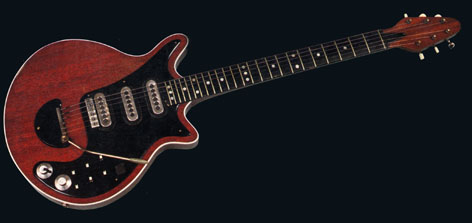
Table of Contents
Make it Yourself: The Red Special
The final guitar in the series is my favourite because it inspired me to build my own guitar when I was 16. It is of course the Red Special, built by Queen guitarist Brian May in 1963. Together with his father Harold, Brian made his iconic guitar because he couldn’t afford to buy one from the shops. They enjoyed a good challenge, and in true Queen fashion, decided that such an undertaking was worth doing right.
The father/son team set out to make the perfect guitar, spending two years building the instrument. It’s hardly surprising, given that they made almost everything from scratch: apart from fretwire, pickups and machine-heads, Brian made every part of the Red Special out of bits and pieces he found lying around.
Mantelpiece and knitting needles
To begin with, the neck was made from a 100 year-old mahogany mantelpiece that his neighbour wanted to throw away – it was ideal for making a guitar, as the wood was now perfectly seasoned and thus less likely to warp. It still has some wormholes that Brian covered up with toothpicks. The fretboard was good old English oak, which is comparable to maple in hardness, so not a bad choice; Brian stained it black. The dot-markers were mother-of-pearl, sources from his mother’s button box. He bought fretwire for threepence a foot, gracing the guitar with 24 frets, which range five octaves.
The neck is bolted on to the body with an extra-long tenon, for added stability. The body itself is semi-hollow, made from an old oak table, some blockboard and a mahogany laminate on the front. Brian wanted to make an f-hole but lacked the necessary tools. (In retrospect this was probably a good thing, as an f-hole could have caused too much feedback.) The white binding, which gives the guitar that neat border, came from shelf-edging. To finish it off, the body was stained red and a piece of black Perspex became the pickguard.
The hardware was even more genius, particularly the vibrating bridge. Brian invented a simple but effective system: little ridges cut into blocks of metal held rolling saddles, which he made himself; these could be adjusted for intonation, and offered less friction for better tuning stability:
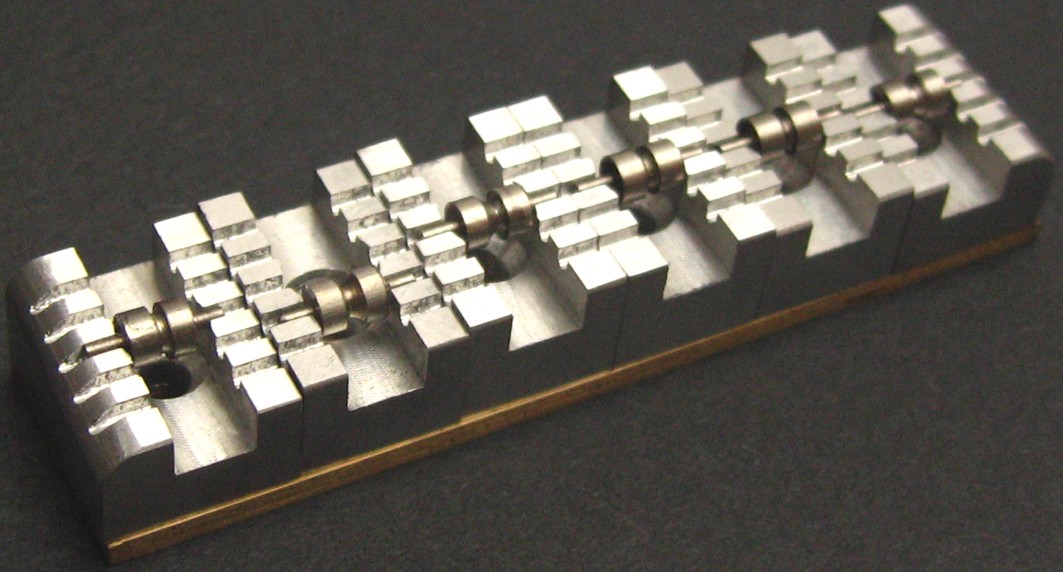
The vibrating mechanism is fashioned out of a kitchen knife and two motorbike valve springs:
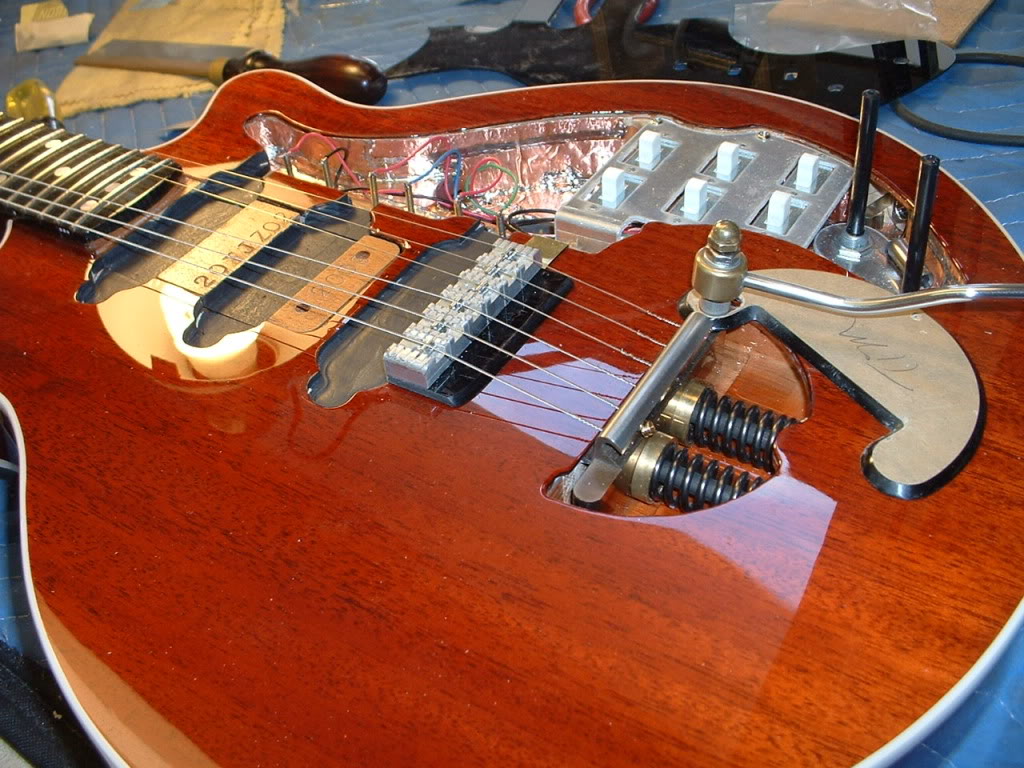
Finally, the tremolo arm was made using his mother’s largest knitting needle.
The result
So what does it sound like? Pretty unlike any other guitar, as expected. The short 24” neck makes for a rounder tone with less attack, while its lower string tension makes it particularly responsive to expressive playing (Brian uses very precise bends and tremors in his playing). The semi-hollow body adds sonic resonance, because the sound waves bounce back and forth inside the hollow space and influence the oscillating strings. Meanwhile, the classic mahogany coupled with the dense oak will result in a sound not unlike a Les Paul.
But arguably the most interesting part of the sound comes from the electronics. First of all, the three Tri-Sonic pickups, made by Burns of London. These single-coil pickups sense the string vibration at three points along the string (hence the name), which gives them that legendary harmonic richness. They are wider than usual, resulting in a warm brilliance somewhere between conventional single-coils and humbuckers. And to increase the Red Special’s tone palate even further, Brian gave each pickup its own designated on/off switch. The Red Special has seven pickup configurations, including two unusual ones (bridge + neck or all three).
Each pickup also has a phase inverter. Put simply, when two pickups are out of phase, some of the signal is cancelled out (see diagram ).
It results in a slightly hollow, nasal tone, one which sounds horrible in theory, but it can cut through a mix very clearly. In the hands of a great guitarist like Brian May it really becomes a distinctive sound. A good example is on the song Procession, which introduces the Queen II album halfway through, Brian introduces a thin ringing line, which pierces through the thick layers of guitar like a fragile ray of light – that’s out of phase.
It can also be heard in the screeching solo of Bohemian Rhapsody or the harsh, brown growl of Stone Cold Crazy. And if you’re still not sure, maybe this Geordie guy can give you a better demonstration:
So: make it yourself!
With his Vox AC30 amps and a sixpence as a pick, Brian has a very distinctive sound and playing style – but his unique guitar also has a lot to do with it. He uses “relatively” few effects, and most of the tonal variation comes from the Red Special itself. It is what he plays 90% of the time, and has always taken great care of his baby. Strangely, after 40 years of service, Brian has yet to re-fret his Red Special…
The great, curly-haired, badger-loving, riffing and soloing Brian May has given us more than his music – his ingenious guitar has doubtless inspired thousands of other young guitarists to make their own perfect, personal guitar. So, are there any budding luthiers out there? Want to make your own guitar that may one day be provide the soundtrack for a generation? Write me if you want some advice or resources to get started!
To sound more like Brian May, it’s important to take the time to study his music and learn your craft. A guitar player’s craft will consist of studying music theory, learning how chord progressions and melodies are made, and then improving your technique so that you can play what you create. Lots of our free articles can help with this including such topics like the ii chord, three door down chords, and tom petty chords and lyrics.


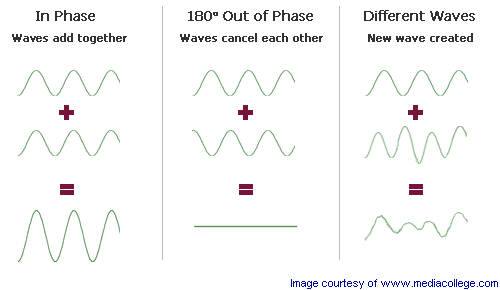


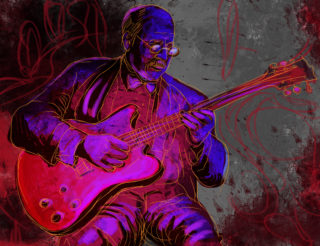



I realize this article is 3 1/2 years old, but who puts Brain May at the bottom of the list?? He should at least be in the top three. The man is a genius. I mean who on your list takes bits of trash and turns it into a work of art? I completely respect him for it and Dr. May has also stated that he knew exactly how he wanted his guitar to sound before designing and building it. The Red Special is priceless!